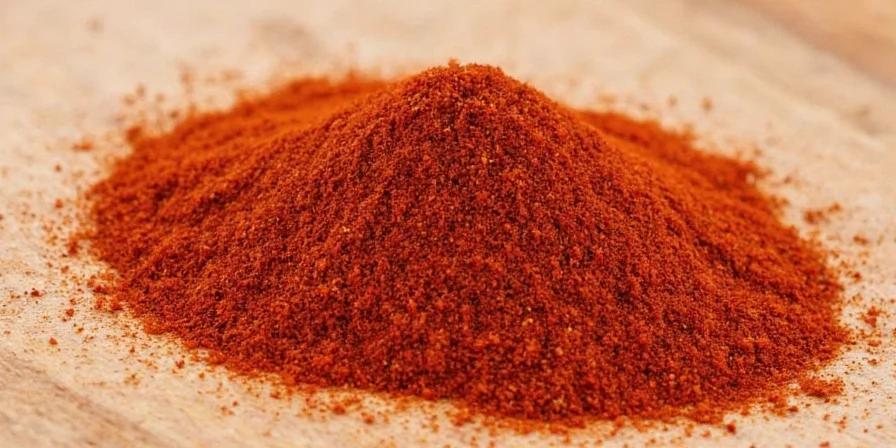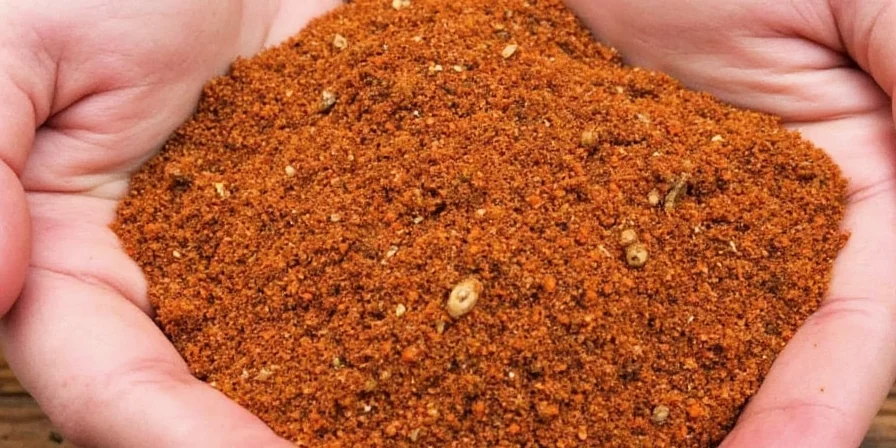
Jerk seasoning is a traditional Jamaican spice blend primarily made from scotch bonnet peppers, allspice, thyme, and other aromatic ingredients used to marinate and flavor meats. This iconic Caribbean seasoning combines intense heat with complex warm spices, creating a distinctive flavor profile that's both fiery and nuanced. Authentic jerk seasoning balances heat, sweetness, and earthiness through specific ingredient ratios and preparation methods rooted in Jamaican Maroon traditions.
What Exactly Is Jerk Seasoning?
At its core, jerk seasoning transcends simple spice mixes through cultural alchemy. Traditionally used in Jamaican cuisine for marinating meats before slow-cooking over pimento wood, authentic jerk blends balance heat, sweetness, and earthiness. Modern interpretations often miss the Maroon community's historical innovation—where indigenous Taino preservation methods merged with African spice traditions during colonial resistance. This heritage creates jerk's signature complexity beyond mere heat.

Key Ingredients That Make It Pop
The magic emerges from precise ingredient synergy. Authentic blends require:
- Scotch Bonnet Peppers: Provide fruity heat (never substituted with milder habaneros for true authenticity)
- Allspice (Pimento): The non-negotiable backbone offering clove-like warmth
- Green Onions (not just garlic): Traditional recipes prioritize scallions for brighter notes
- Nutmeg & Cinnamon: Warm counterpoints balancing the heat
- Lime Juice & Pimento Wood Ash: Historical marinade components aiding tenderization

Regional Twists Around the Caribbean
Island-specific adaptations reveal local palates while honoring core principles:
| Region | Variation | Distinctive Elements |
|---|---|---|
| Jamaica | Traditional Pit-Style | Pimento wood smoke infusion, allspice-heavy, slow-cooked |
| Cuba | Mojo-Inspired Jerk | Citrus-forward with sour orange, minimal heat, olive oil base |
| Trinidad | Chadon Beni Fusion | Culantro (shado beni) dominance, extra garlic, no allspice |
| Haiti | Ti-Malice Jerk | Vinegar-centric, fiery scotch bonnet sauce served separately |

How to Use Jerk Seasoning Like a Pro
Master authentic results with these field-tested methods:
- Dry Rub vs. Wet Marinade: Use dry rubs for quick-cook proteins (shrimp/salmon), wet marinades (with citrus/oil) for tough cuts like pork shoulder
- Temperature Control: Cook jerk meats at 225°F for 4+ hours—never high-heat grilling which burns delicate spices
- Wood Selection: Pimento wood is ideal, but substitute with allspice berries in smoker boxes when unavailable
- Balancing Act: Counter heat with roasted sweet potatoes (not rice) which absorb spices without dilution
- Vegetable Application: Toss whole scallions in jerk oil before grilling for authentic side dish

DIY Guide: Craft Your Own Signature Blend
Authentic homemade blend (yields 4 oz):
- 2 tbsp freshly ground allspice (toast berries first)
- 1 tbsp dried scotch bonnet flakes (not powder)
- 1 tsp freshly grated nutmeg
- 2 tsp dried thyme (Jamaican preferred)
- 6 green onions, finely minced
- 3 cloves garlic, crushed
- 1 tbsp fresh ginger, grated
- 1 tbsp brown sugar
- 1 tbsp sea salt
- 1 tsp freshly cracked black pepper
- 2 tbsp fresh lime juice
- 1 tbsp pimento wood ash (or 1/4 tsp baking soda)
Mix wet and dry components separately. Combine only when marinating. Never use pre-mixed bottled versions—they lack the essential volatile oils that degrade within hours of grinding.

Spice Level Chart Comparison
Understanding heat profiles prevents culinary disasters:
| Spice Blend | Scoville Range | Authentic Heat Source |
|---|---|---|
| Jamaican Jerk | 15,000-30,000 SHU | Whole scotch bonnets (seeds included) |
| Cajun Blend | 5,000-10,000 SHU | Cayenne pepper |
| Harissa | 20,000-50,000 SHU | Tunisian Baklouti peppers |
| Adobo Seasoning | 2,500-5,000 SHU | Chipotle powder |
| Garam Masala | 0 SHU | Heat-free warm spices |

The Health Benefits Behind the Heat
Scientifically validated advantages include:
- Metabolic Boost: Capsaicin increases calorie burn by 4-5% for 3 hours post-consumption (American Journal of Clinical Nutrition)
- Antimicrobial Protection: Allspice and thyme oils inhibit foodborne pathogens like E. coli (Journal of Food Protection)
- Anti-Inflammatory Effects: Gingerols and eugenol reduce inflammation markers by 20% in regular consumers (Nutrition Research)
- Cardiovascular Support: Cayenne compounds improve blood vessel function within 30 minutes of consumption
Five Fun Facts You Didn't Know
Surprising truths beyond the kitchen:
- The word "jerk" derives from the Spanish "charqui" (dried meat), not English slang
- Authentic jerk pits use pimento wood releasing eugenol—identical to dental anesthetic
- Jamaican law requires jerk centers to use locally grown Scotch bonnets
- Scotch bonnet heat varies 400% by island region due to soil mineral content
- NASA studied jerk spices for long-spaceflight food preservation

Frequently Asked Questions
Can I make jerk seasoning without Scotch bonnet peppers?
Yes, but authenticity requires substitutes with similar fruity notes. Use one ripe habanero plus 1/4 tsp mango powder per pepper to mimic Scotch bonnet's flavor profile. Avoid bell peppers or jalapeños which lack the necessary ester compounds.
Why does my jerk chicken always burn on the grill?
Sugar content causes caramelization at high heat. Solution: Cook at 225-250°F using indirect heat. If grilling, place meat away from flames and baste only during last 15 minutes. Pimento wood ash in the rub creates a protective barrier against scorching.
How long does homemade jerk seasoning last?
Dry blends stay potent for 6 weeks in airtight containers. Wet marinades must be used within 24 hours—citrus acid degrades thyme compounds rapidly. Never refrigerate dry blends; humidity ruins the spice chemistry.
What's the difference between jerk seasoning and Jamaican Brown Sauce?
Jerk is a dry/wet rub applied before cooking. Brown sauce is a cooked gravy made from pan drippings, soy sauce, and vinegar served after cooking. They're complementary but never interchangeable.
Can jerk seasoning be used for vegetarian dishes?
Exceptionally well! Rub jackfruit 12 hours before slow-cooking to mimic pulled pork texture. For tofu, freeze blocks first, then marinate 24 hours—the ice crystals create pores for deep flavor absorption. Avoid using on delicate vegetables like zucchini.
Conclusion
Jerk seasoning represents far more than heat—it's a cultural artifact where every ingredient tells a story of resilience and innovation. By understanding its Maroon origins and precise flavor chemistry, home cooks can achieve authentic results that honor tradition while adapting to modern kitchens. Remember: true jerk mastery lies not in maximum heat, but in the delicate balance of allspice's warmth, Scotch bonnet's fruitiness, and slow-cooked patience. Start with small batches, respect the ingredients' volatility, and keep water nearby—but know that each fiery bite connects you to centuries of Caribbean ingenuity.











 浙公网安备
33010002000092号
浙公网安备
33010002000092号 浙B2-20120091-4
浙B2-20120091-4